1-Week Bodyweight Core Workout
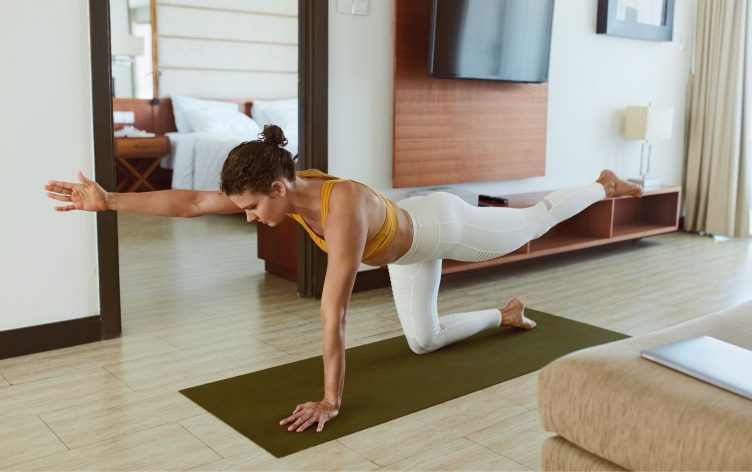
With all the sophisticated gadgets, complicated routines, and ridiculously long workouts accessible online and elsewhere, finding a core workout might be intimidating. Consistency, on the other hand, is the best way to improve core strength and stability. Small, manageable stages lead to this.
This software goes back to the basics, beginning small and gradually increasing in complexity, much like a game of "add-ons." On the first day, you'll learn how to do a plank, which is the cornerstone of core strength. Every day, a new exercise is introduced to the program to keep the core functional in all planes of motion challenged.
THE PROGRAM
Complete 30 seconds of each exercise before resting for 30 seconds. For a total of two rounds, repeat the process. During unilateral workouts, make sure to execute reps on both sides of your body (ex: side planks or bird dogs). This can be done as a stand-alone workout or added to the end of a normal exercise routine.
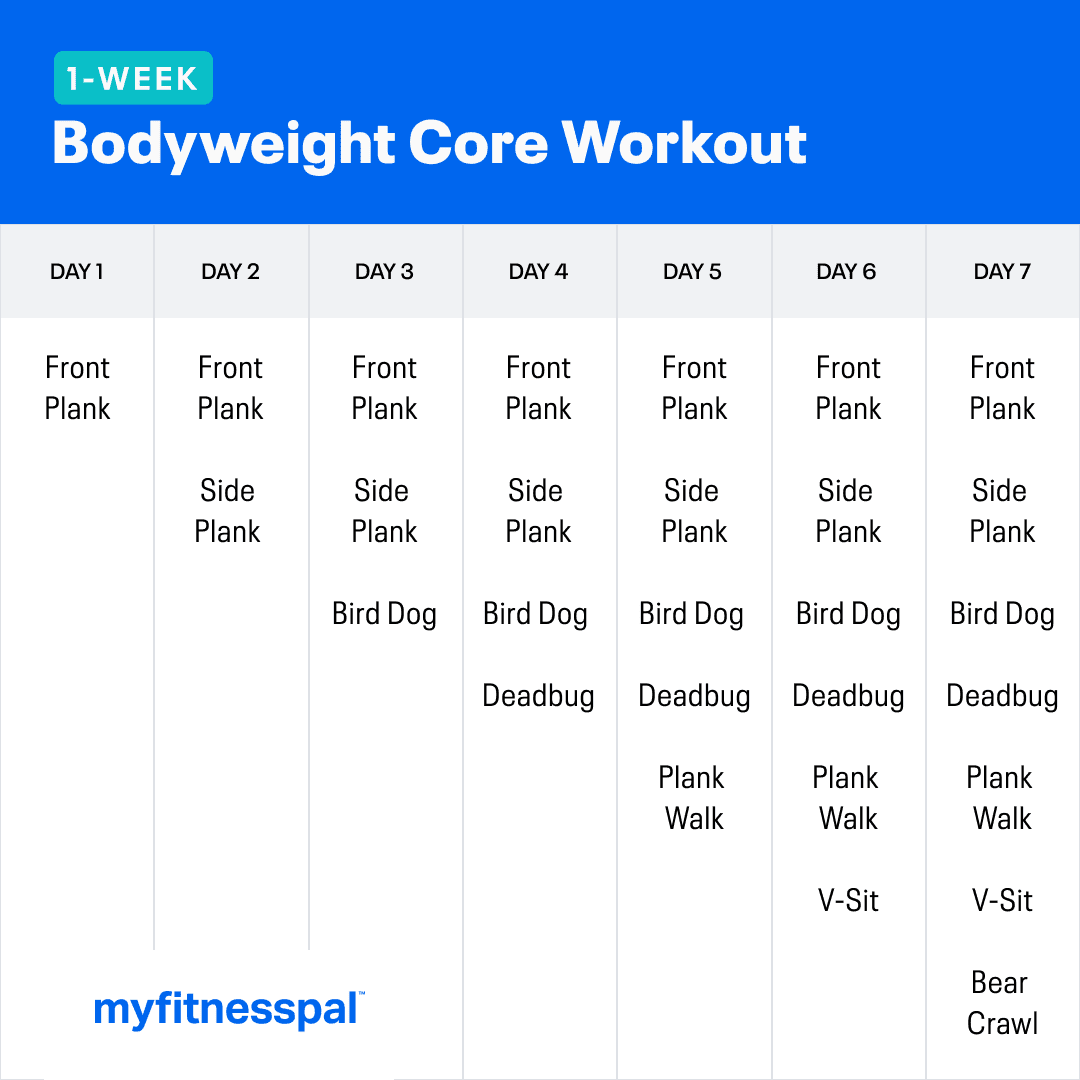
CLICK TO TWEET THIS ARTICLE > Who’s joining me for this 1-week core workout from @healthyhabitt?
THE EXERCISES
FRONT PLANK
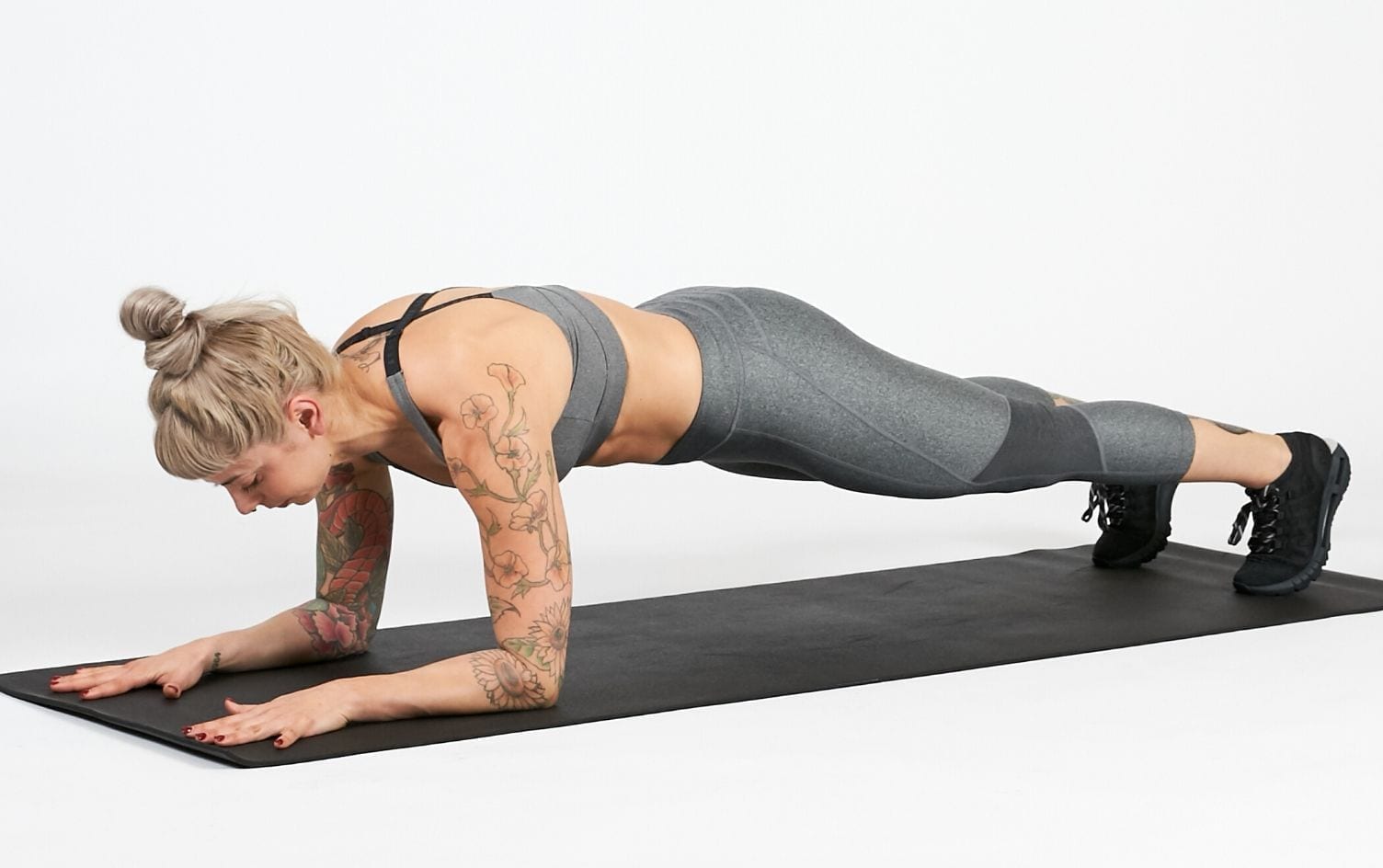
The Move: Hold tighter, more active planks for a shorter period of time for maximal strength and endurance gains. Brace every muscle in your body (particularly your glutes!) and keep a perfectly straight line from your head to your heels for 30 seconds with your forearms on the ground and elbows directly under your shoulders.
Level up by lifting one leg at a time while holding the plank.
The plank can be performed from the knees. While holding this kneeling plank posture, make sure your hips are in line with your shoulders and knees.
SIDE PLANK

The Move: Place your right forearm on the ground, elbow directly beneath your right shoulder, and align your right hip and heel with that shoulder. Push the earth away from you with a firm and braced core and press up into a straight line from your head to your heels, keeping your shoulder joint engaged. With the top foot in front of the bottom, pressing the blades of the feet into the floor, your feet can be stacked or staggered. Hold this position for 30 seconds before switching to the other side.
Increase the difficulty by adding leg lifts to the top leg.
Reduce the difficulty by performing this exercise as a side bridge from the knees rather than the feet.
BIRD DOG
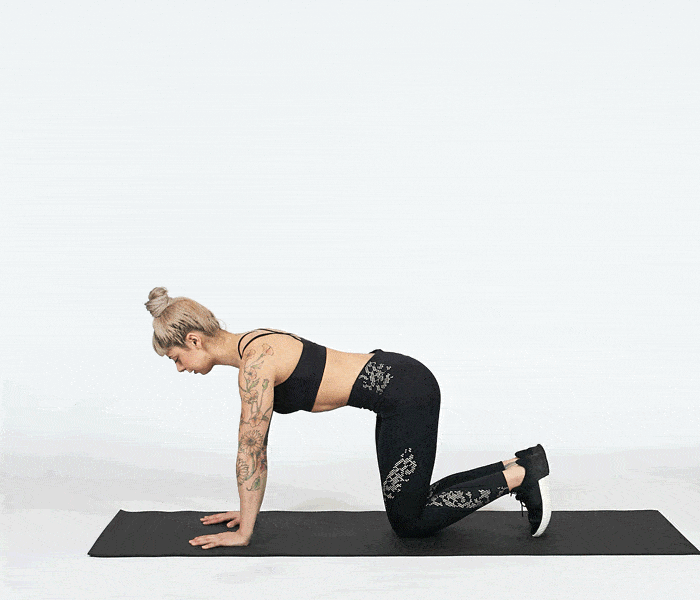
The Move: In the quadruped position, the bird dog is a co-contraction of one leg and the opposing arm. Begin on your hands and knees, with your spine in a neutral position. Hands should be directly under shoulders, and knees should be directly under hips. As you extend your right arm straight in front of you and your left leg straight out behind you, gently support your core. When your arm and leg form a straight line, pause, and then slowly lower them back to the beginning position. Rep with the right leg and left arm.
Increase the difficulty by using a resistance band or ankle/wrist weights.
Keep your hand and leg closer to the ground as you level down.
DEADBUG

The Move: Extend your arms straight out toward the sky while lying flat on your back. Bend your knees to 90 degrees and lift your legs off the floor. Lower your right arm and left heel to the floor while keeping your core braced and your lower back pressed into the floor. With your hand and heel, lightly touch the floor, then slowly return to the starting position. Rep with the right heel and left arm.
Increase the difficulty by repeating the exercise with straight legs, making sure your back does not arch up off the floor.
Begin with your feet firmly planted on the ground. Lift and drop one leg at a time, maintaining your core strong and braced in the process.
PLANK WALK

The Move: Begin in a high plank position with your ears, hips, knees, and heels all in one line. Drop down to your right forearm, then your left, with minimal movement or rotation. Return to the high plank, one arm at a time, while maintaining a tight midsection. Lower the left forearm first, then the right, and so on. During the 30-second work periods, switch lead arms.
Increase the difficulty by balancing a light weight or yoga block on your back and not allowing it to slide off.
Perform this exercise at a lower level, from your knees.
V-SIT
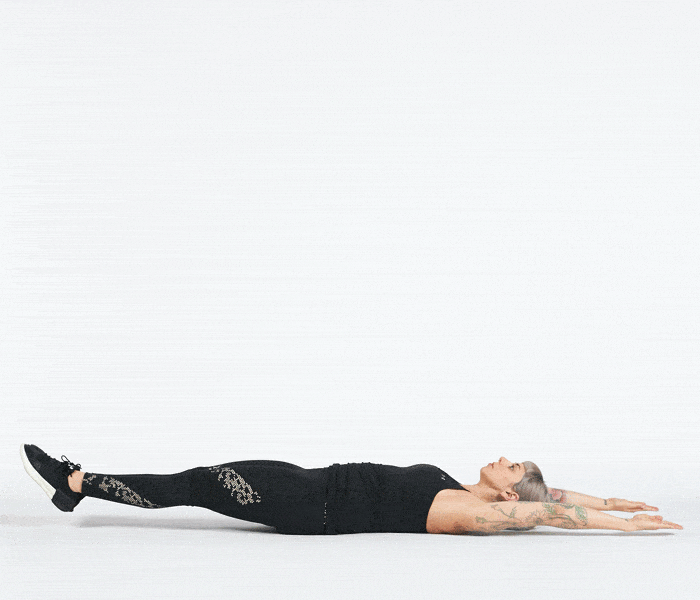
The Move: Start by lying on your back with your arms raised above your head. Raise your lower and upper bodies off the floor at the same time, hinged into a "V" position, while keeping your spine neutral and core braced. Return to the floor and repeat with control.
Increase the difficulty by putting a little ball between your legs and passing it from your legs to your hands at the end of each repeat.
Perform this action at a lower level so that you end up in a tuck position on top. (See the preceding paragraph.)
BEAR CRAWL

The Move: Begin by getting down on your hands and knees. Raise your knees off the ground by about 2 inches. In a crawling action, simultaneously move your right hand and left foot forward, keeping your hips lower than your shoulders. Then, take a step forward with your left hand and right foot. Move roughly 10 paces forward, then 10 paces back, depending on space.
As you go through the levels, you will be able to move quicker.
Slow it down and take it slowly at first.
Check out the app's "Workout Programs" section for extra fitness inspiration, where you can find and log a range of routines created by performance experts. Alternatively, you can create your own routine with workouts that are appropriate for your objectives.
